

| Circe
| Thursday, February 25, 2010 I repeated the general pattern started earlier in the week: sand existing varnish, build and/or install new trim, and varnish at the end of the day. With a couple coats of varnish on the new head countertop fiddles, it was time to install them so I could bung and finish the finish in place. I installed the fiddles with glue and screws and bunged the screw holes; later, I trimmed the bungs flush, and applied another coat of varnish to the fiddles. The photo shows the fiddles before the bungs were trimmed. |
|
I bade a fond farewell to my trusty construction ladder at the companionway and removed it for good, as it was time to trim out the companionway and engine box. I installed the engine box components after protecting the ladder treads with cloths, and fit the top in place; I had to make a cutout in the top to accommodate the back of the engine gauge panel, and made some measurements and marks for a vertical panel to hide the unfinished surfaces above the engine box, which I'd build soon. |
 |
|
The companionway trim was next. I installed the stool piece that I milled yesterday and used it to conceive and build several of the additional pieces required to trim out the companionway opening. I'd cut and temporarily install all the trim pieces in the rough before removing them for final shaping and sanding and finishing. |
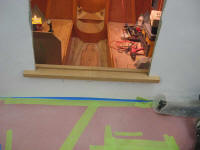 |
| To help support the stool in place and trim out the bottom of the opening, I cut a section of trim to form an apron beneath, allowing the stool molding to overhang a bit on all sides. |
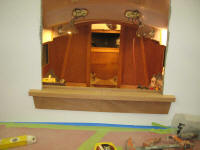 |
|
I continued with the main vertical trim on each side. Here, I deviated from the original configuration a bit, choosing to have the face trim extend beyond inside of the companionway opening to form the front side of the channel required to hold the swashboards in place, and also to hide the edge grain of the perpendicular piece that would ultimately form the other sides of the channel. |
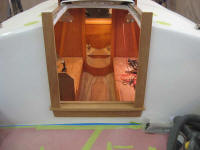 |
|
I left the side pieces overlong at the top for now to allow for later trimming, secured them plumb, and then worked on the L-shaped piece that would form the remainder of the channel. I milled 7/8" rabbet along one edge, cut the bottom edges to fit the profile of the stool molding, and trimmed the tops as needed to fit; I could dry fit the starboard side now, as shown, but the fiberglass liner on the port side required a small bit of trimming first to allow the molding to slip by; since by this point I'd already done some varnishing in the interior, I couldn't make this small cut at the moment for fear of raising unwanted dust. I'd finish the port side in the morning. |
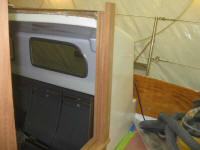
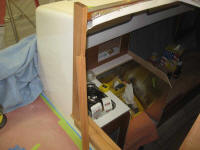 |
|
I wrapped up the day with more varnish on all the ongoing pieces, in addition to the varnish I'd applied on portions of the interior earlier in the day. |
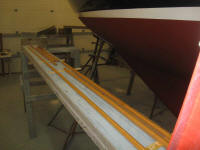
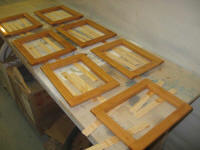
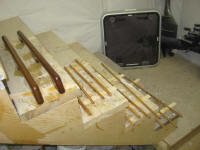 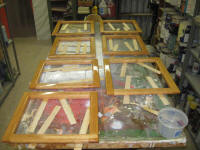 |
|